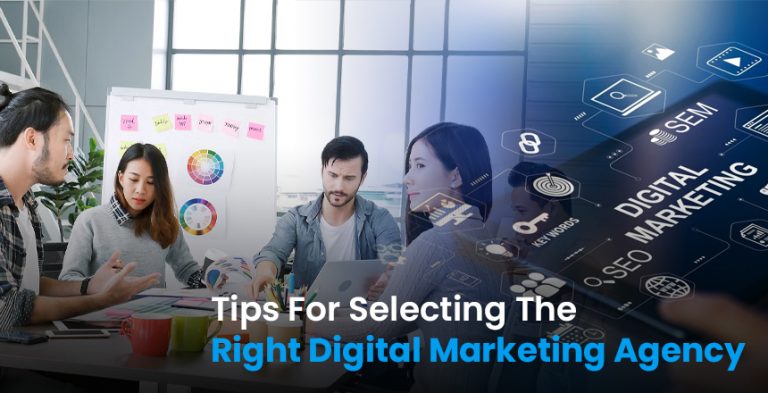Okay, the truth is no one wants to get those plain, uninteresting emails that have nothing
personal or interesting to offer. Think about it: how many of you have received an email that you
have opened then, upon reading the subject, discarded the email within a short span of time say
less than a minute? That is why there is a concept of email personalisation that can help involve
the desired audience. Customers today now have a high level of demand for any brand. They
don’t want to be pressured into buying or getting yet another email; they are just a number in
your large database.
In a cocktail of hundreds of emails, personalization is the way to stand out and make a
difference. Beyond getting someone’s first name and using it in the subject line; it’s about
providing content which seems personalized. In this blog, we will discuss a few of the most
important methods of enhancing the personalization which will in turn can help you to deliver
better email marketing campaigns and stronger customer relationships.
Why Personalization Matters
Generic emails are not appropriate in today’s business world. In today’s world if you are still
revealing the same broadcast information to a large number of your audience you are off track
for serious engagement. Customers want to be recognized and valued, not just when they are
using and engaged with brands.
Here’s why personalization is a game-changer:
- More Opens and Clicks: Emails having relevant content in the subject line show 26% more
opening rates than others. That is why when people get the impression that an email is actually
directed towards them, they are automatically more interested. - Better Customer Experience: When the mail is relevant it seems you are receiving something
of value. It’s worth stating that generally a good email does not only convince the client, a good
email is a solution to a certain problem or meets a certain need. - Higher Conversions: Promotional messages lead people to action since these are tailored
towards the kind of behavior exhibited by the target individuals. - Loyal Customers: So when the customers are understood, they remain loyal to your brand
and even turn into evangelists for your brand.
How to Individualise Your Emails
Alright, let me guarantee you share some of the most effective tactics towards fostering a more
personal, richer and impactful flow of emails.
Start with Segmentation
Personally, the division of audiences is the basis of any successful personalization process. Basically, it comes down to categorizing your audience into smaller subsets depending on things such as age, geographic location, interests or purchase behavior. Instead of making just one email blast to the entire list you are now delivering personal messages to certain lists.
How to Segment Your Audience:
- Demographics: It should further segment the messages in terms of Age, Gender or Income.
For instance, while a 20 yr old would like fashion promotional offers, a 50 yr old would be
interested in business casual wear deals. - Buying Behavior: Use follow-up emails with those people who visited particular products or left
the carriage in the middle. - Location: Most of the time it requires selling region-based products or events.
As segmentation makes your emails more relevant, relevance translates to performance.
Use Dynamic Content
Compared to simple personalization, dynamic content in its turn PERSONALIZES SECTIONS
OF AN EMAIL. Well, imagine you type a single email but create it in such a way that nobody
who receives it has a chance to think that the email sent to the next recipient was the same as
the one he or she just read.
Examples of Dynamic Content:
- Suggesting related products where a particular product has been viewed or bought by another
person. - Presenting information particular to an area such as the shops around or events happening
next.
Extent of customizing information presented to consumers, e.g. coupons relevant to a person’s
membership level.
This method of creating content is efficient not only for the one creating the email, though every
recipient feels like the provided email has been made for him/her.
Leverage Behavioral Triggers
Behavioral trigger emails are some of the most effective tools in your email marketing arsenal.
These are emails sent automatically based on a user’s actions—or lack of actions.
Incline Emails as Case in Points:
- Welcome Emails: Gate it to new customers who sign upin your email list and a friendly
introduction that will set the tone for your relationship. - Cart Abandonment Emails: Whenever you observe someone leaving items at their cart without checking out, you may send a reminder or offer a small discount to close the deal.
- Re-engagement Emails: Do you have subscribers who went inactive? You send a message with the special offer or fresh content to bring them back.
Trigger emails are not just sent at the right time, they are also relevant to the situation, and as
far as the potential customer sees them, they are not ads but valuable reminders.
Personalize Subject Lines
The subject line is your first (and often only) chance to grab attention. A personalized subject
line can make the difference between someone opening your email or ignoring it.
Ideas for Personalization:
- Use their first name: “Hey Sarah, your exclusive offer is here!”
- Reference a location: “Top picks for winter adventures in Chicago.”
- Mention recent activity: “Loved that jacket? Check out these matching boots.”
Adding a touch of personalization to your subject lines makes your emails feel less like spam
and more like a thoughtful message.
Celebrate Milestones
Everybody loves being celebrated. Sending emails for special occasions like birthdays,
anniversaries, or customer milestones is a great way to build emotional connections.
Examples of Milestone Emails:
- Offer a discount or gift on their birthday.
- Celebrate the anniversary of their first purchase or sign-up with a thank-you message and
special reward. - Highlight how much they’ve achieved with your brand, like, “You’ve saved $500 this year with
us!”
These small gestures show that you care about your customers as individuals, not just as sales
opportunities.
Make It Interactive
Interactive emails are a fun way to engage your audience and create a more personalized
experience. Adding interactive elements like quizzes, polls, or games keeps things interesting
and memorable.
Examples:
- A quiz to help someone find the perfect product, with personalized recommendations based on
their answers. - A spin-the-wheel game offering discounts or rewards.
- A quick poll to gather feedback, making your audience feel heard.
Interactive content is not only engaging but also gives you valuable insights into your customers’
preferences.
Send Emails at the Right Time
Timing is everything when it comes to email marketing. Sending emails when your audience is
most likely to open them can drastically improve engagement rates.
How to Optimize Timing:
- Use time-zone-based scheduling to ensure emails arrive at the recipient’s local time.
- Analyze past campaigns to identify the best sending times for your audience.
- Experiment with A/B testing to find what works best.
When your email arrives at the right moment, it’s more likely to be opened and acted upon.
Ask for Preferences
Sometimes, the best way to personalize is to simply ask your audience what they want. A
preference center lets subscribers tell you what kind of content they’re interested in, how often
they want to hear from you, and what formats they prefer.
Benefits of a Preference Center:
- Reduces unsubscribes by giving users control over their email experience.
- Helps you send more targeted, relevant emails.
- Builds trust by showing that you value your audience’s input.
Measuring Success
Personalization isn’t a “set it and forget it” strategy. To know if it’s working, track key metrics like:
- Open Rates: Are personalized subject lines improving opens?
- Click-Through Rates: Are recipients engaging with your content?
- Conversion Rates: Are personalized emails leading to sales or sign-ups?
- Engagement: Are people interacting with your dynamic or interactive content?
Analyzing these metrics will help you refine your approach and get even better results.
Final Thoughts
The incorporation of personalized elements in email marketing is not a tendency but a need.
Recipients want to be treated customers who have companies that know them well and a
statistical fact that the greater the relativity of a personal email, the tighter will be your
relationships. You can construct campaigns that are in harmony with your audience, resulting in
good outcomes, by grouping your audience, using dynamic content, leveraging behavioral
triggers, and celebrating milestones.
The main point is that personalization doesn’t boil down to technology or tools; it’s all about
prioritizing your customers above everything else. Delivering value and relevance remains the
core of your email marketing campaigns to excellence.








